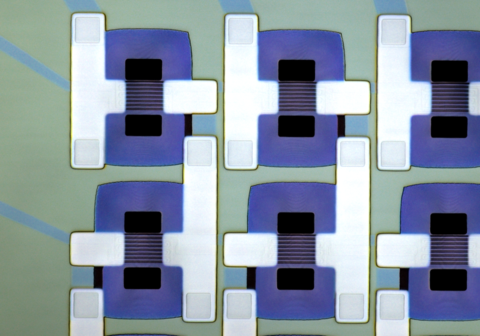
From the minuscule bindings of molecules to the far reaches of space, we’re exploring the universe around us by catching sight of the smallest particles of light.
NIST researchers are unveiling a new kind of single-photon detector array, which can identify individual particles of light (photons). It's useful for spectroscopy, where scientists observe how molecules absorb different colors (or wavelengths) of light. Each molecule has its own color fingerprint on the light spectrum.
This particular detector can catch single photons in the mid-infrared. Here’s how the array works:
Multiple super-cold detectors are connected to one another (shown here) in a grid of sorts with an electrical current flowing through. When a photon strikes one of the detectors, it creates a hot spot and acts as a dam to block the current for a short amount of time.
Our researchers developed a new technique to figure out where, along the columns and rows, the hot spot is. From there, they can create single-photon pictures.
The whole setup is challenging because mid-infrared waves are longer and have less energy to cause the hot spots, compared to visible light, for example. But our scientists have a few tricks up their sleeve and used them to make it work. Get the specifics in their recently published paper.
Follow us on social media for more like this from all across NIST!

